1. Hindricks G, Potpara T, Dagres N, et al. ESC Guidelines for the diagnosis and management of atrial fibrillation developed in collaboration with the European Association for Cardio-Thoracic Surgery (EACTS). Eur Heart J. 2020; 2020:29.
2. Son NK, Park JW, Kim M, et al. Efficacy and safety of outpatient clinic-based elective external electrical cardioversion in patients with atrial fibrillation. Korean Circ J. 2020; 50:511–523. PMID:
32212425.

3. Ebert M, Stegmann C, Kosiuk J, et al. Predictors, management, and outcome of cardioversion failure early after atrial fibrillation ablation. Europace. 2018; 20:1428–1434. PMID:
29165582.

4. Hellman T, Kiviniemi T, Vasankari T, et al. Prediction of ineffective elective cardioversion of atrial fibrillation: a retrospective multi-center patient cohort study. BMC Cardiovasc Disord. 2017; 17:33. PMID:
28100174.

5. Lip GY, Merino JL, Banach M, et al. Clinical factors related to successful or unsuccessful cardioversion in the EdoxabaN versus warfarin in subjectS UndeRgoing cardiovErsion of Atrial Fibrillation (ENSURE-AF) randomized trial. J Arrhythm. 2020; 36:430–438. PMID:
32528568.

6. Frick M, Frykman V, Jensen-Urstad M, Östergren J, Rosenqvist M. Factors predicting success rate and recurrence of atrial fibrillation after first electrical cardioversion in patients with persistent atrial fibrillation. Clin Cardiol. 2001; 24:238–244. PMID:
11288971.

7. Elhendy A, Gentile F, Khandheria BK, et al. Predictors of unsuccessful electrical cardioversion in atrial fibrillation. Am J Cardiol. 2002; 89:83–86. PMID:
11779532.

8. Alegret JM, Viñolas X, Sagristá J, et al. Predictors of success and effect of biphasic energy on electrical cardioversion in patients with persistent atrial fibrillation. Europace. 2007; 9:942–946. PMID:
17545688.

9. Nattel S, Heijman J, Zhou L, Dobrev D. Molecular basis of atrial fibrillation pathophysiology and therapy: a translational perspective. Circ Res. 2020; 127:51–72. PMID:
32717172.

10. Gunturiz-Beltrán C, Nuñez-Garcia M, Althoff TF, et al. Progressive and simultaneous right and left atrial remodeling uncovered by a comprehensive magnetic resonance assessment in atrial fibrillation. J Am Heart Assoc. 2022; 11:e026028. PMID:
36216438.

11. Ko KY, Jang JH, Choi SH, et al. Impact of right atrial enlargement on clinical outcome in patients with atrial fibrillation. Front Cardiovasc Med. 2022; 9:989012. PMID:
36211539.

12. Akutsu Y, Kaneko K, Kodama Y, et al. Association between left and right atrial remodeling with atrial fibrillation recurrence after pulmonary vein catheter ablation in patients with paroxysmal atrial fibrillation: a pilot study. Circ Cardiovasc Imaging. 2011; 4:524–531. PMID:
21778328.

13. Luong C, Thompson DJ, Bennett M, et al. Right atrial volume is superior to left atrial volume for prediction of atrial fibrillation recurrence after direct current cardioversion. Can J Cardiol. 2015; 31:29–35. PMID:
25547547.

14. Moon J, Hong YJ, Shim J, et al. Right atrial anatomical remodeling affects early outcomes of nonvalvular atrial fibrillation after radiofrequency ablation. Circ J. 2012; 76:860–867. PMID:
22293450.

15. Lang RM, Badano LP, Mor-Avi V, et al. Recommendations for cardiac chamber quantification by echocardiography in adults: an update from the American Society of Echocardiography and the European Association of Cardiovascular Imaging. J Am Soc Echocardiogr. 2015; 28:1–39.e14. PMID:
25559473.

16. Kou S, Caballero L, Dulgheru R, et al. Echocardiographic reference ranges for normal cardiac chamber size: results from the NORRE study. Eur Heart J Cardiovasc Imaging. 2014; 15:680–690. PMID:
24451180.

17. Gauthier J, Wu QV, Gooley TA. Cubic splines to model relationships between continuous variables and outcomes: a guide for clinicians. Bone Marrow Transplant. 2020; 55:675–680. PMID:
31576022.

18. Vittinghoff E, McCulloch CE. Relaxing the rule of ten events per variable in logistic and Cox regression. Am J Epidemiol. 2007; 165:710–718. PMID:
17182981.

19. Bunting KV, Steeds RP, Slater LT, Rogers JK, Gkoutos GV, Kotecha D. A practical guide to assess the reproducibility of echocardiographic measurements. J Am Soc Echocardiogr. 2019; 32:1505–1515. PMID:
31653530.

21. Moon J, Lee HJ, Kim JY, et al. Prognostic implications of right and left atrial enlargement after radiofrequency catheter ablation in patients with nonvalvular atrial fibrillation. Korean Circ J. 2015; 45:301–309. PMID:
26240584.

22. Grönberg T, Hartikainen JE, Nuotio I, et al. Can we predict the failure of electrical cardioversion of acute atrial fibrillation? The FinCV study. Pacing Clin Electrophysiol. 2015; 38:368–375. PMID:
25534241.

23. Hocini M, Nault I, Wright M, et al. Disparate evolution of right and left atrial rate during ablation of long-lasting persistent atrial fibrillation. J Am Coll Cardiol. 2010; 55:1007–1016. PMID:
20202517.

24. Teixeira R, Monteiro R, Garcia J, et al. The relationship between tricuspid regurgitation severity and right atrial mechanics: a speckle tracking echocardiography study. Int J Cardiovasc Imaging. 2015; 31:1125–1135. PMID:
25904401.

25. Soulat-Dufour L, Lang S, Addetia K, et al. Restoring sinus rhythm reverses cardiac remodeling and reduces valvular regurgitation in patients with atrial fibrillation. J Am Coll Cardiol. 2022; 79:951–961. PMID:
35272799.

26. Magnussen C, Niiranen TJ, Ojeda FM, et al. BiomarCaRE Consortium. Sex Differences and similarities in atrial fibrillation epidemiology, risk factors, and mortality in community cohorts: results from the BiomarCaRE consortium (biomarker for cardiovascular risk assessment in Europe). Circulation. 2017; 136:1588–1597. PMID:
29038167.
27. Inohara T, Shrader P, Pieper K, et al. Association of of atrial fibrillation clinical phenotypes with treatment patterns and outcomes: a multicenter registry study. JAMA Cardiol. 2018; 3:54–63. PMID:
29128866.

28. Kim YG, Choi HY, Shim J, et al. Electrical remodeling of left atrium is a better predictor for recurrence than structural remodeling in atrial fibrillation patients undergoing radiofrequency catheter ablation. Korean Circ J. 2022; 52:368–378. PMID:
35129318.

29. Schmidt AS, Lauridsen KG, Torp P, Bach LF, Rickers H, Løfgren B. Maximum-fixed energy shocks for cardioverting atrial fibrillation. Eur Heart J. 2020; 41:626–631. PMID:
31504412.

30. Page RL, Kerber RE, Russell JK, et al. BiCard Investigators. Biphasic versus monophasic shock waveform for conversion of atrial fibrillation: the results of an international randomized, double-blind multicenter trial. J Am Coll Cardiol. 2002; 39:1956–1963. PMID:
12084594.

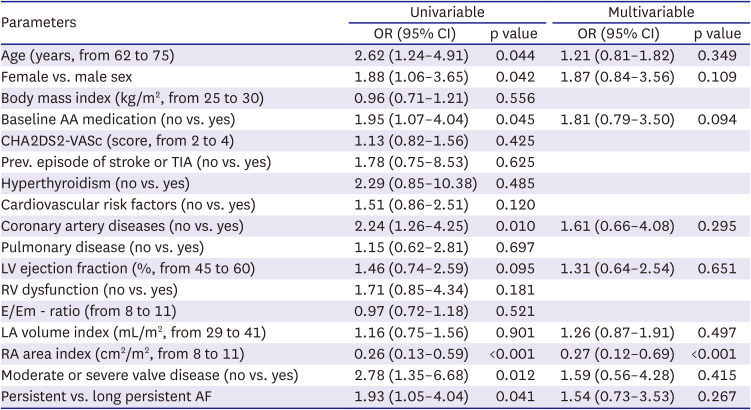
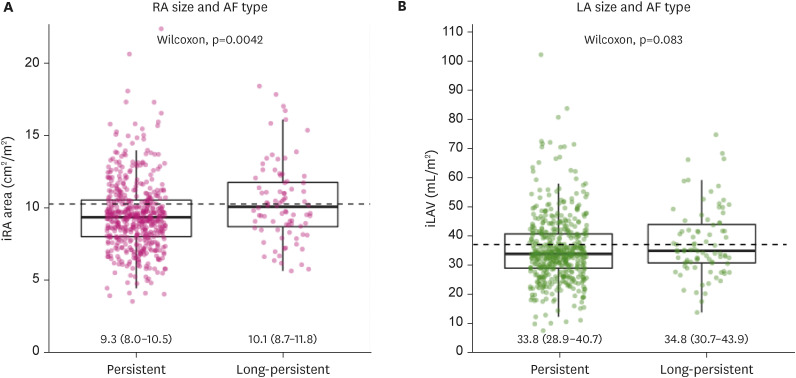
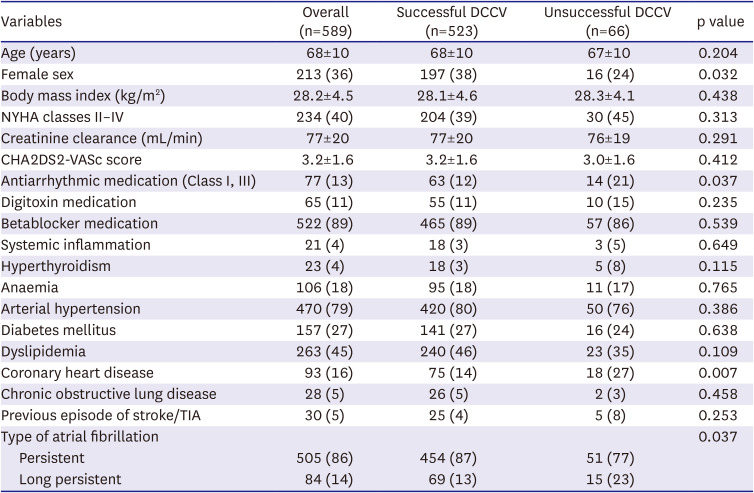
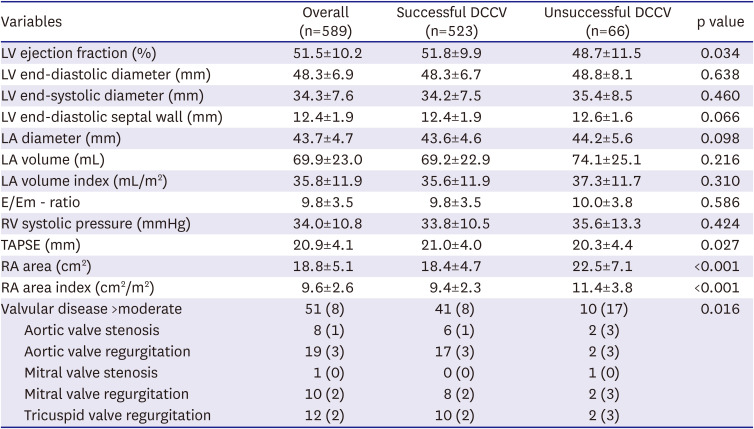
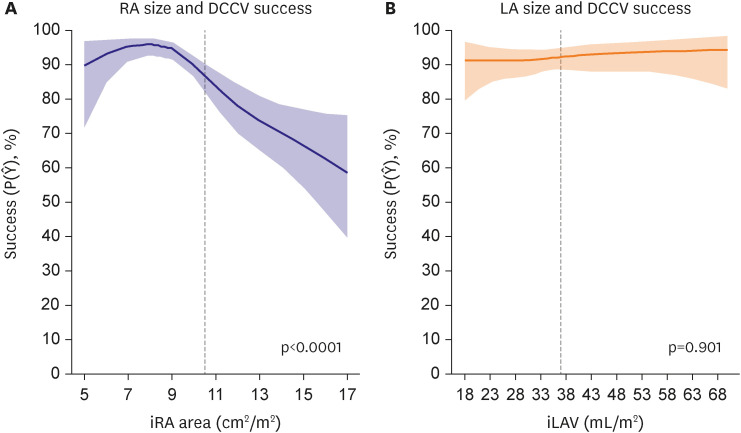
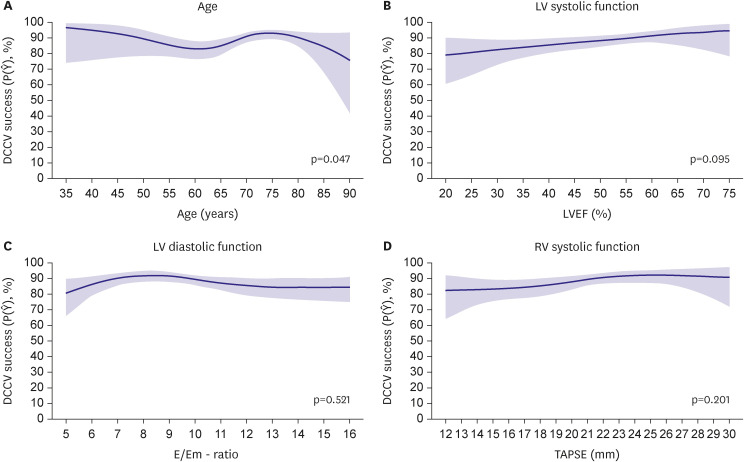





 PDF
PDF Citation
Citation Print
Print




 XML Download
XML Download